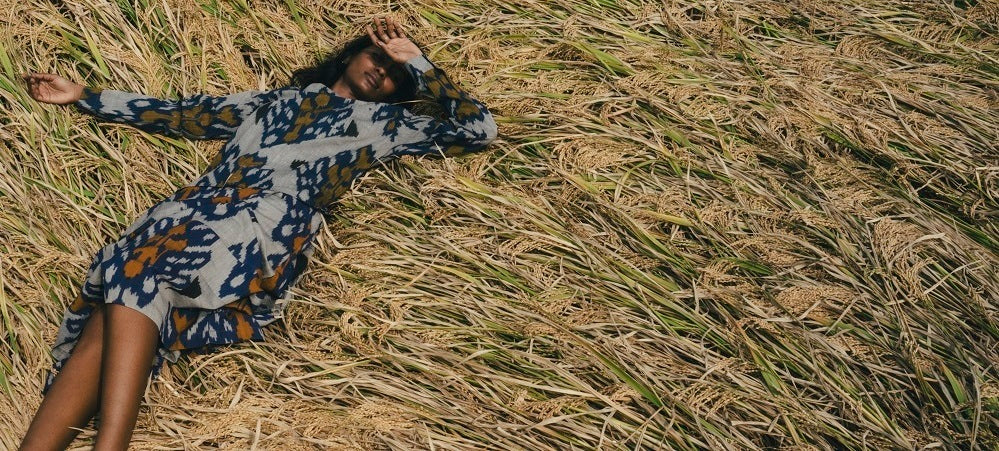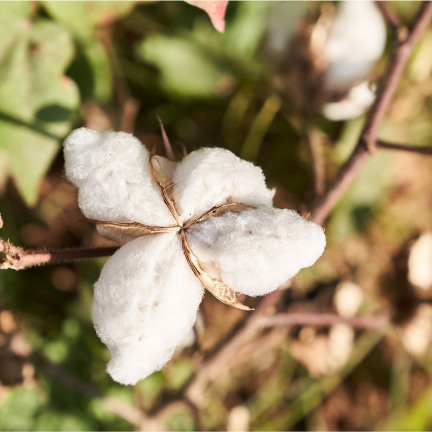It’s October on the farm here in Erode and we are busy sowing the next crop of cotton on 130 acres of farm land across 95 farmers. You may have heard a little about the story of the Ōshadi Collective and our regenerative cotton farm and Seed-to-Sew fashion and textiles initiative. We have so much going on, in the fields, on the looms, at the atelier, and in the dye works. So we are starting this journal as a way to share what we are doing, talk about the connections between the soil and the fibres we grow and the clothes we make, and introduce you to the Ōshadi Collective community.
We began our story back in 2016 when our founder Nishanth Chopra returned to India from his business degree at Lancaster University in the north of England, with some ideas about how to rethink the textile industry back home in Erode, in Tamil Nadu. Since then, step by step, he has built a collective who have created an entire low carbon regenerative cotton supply chain, which begins with the soil. We are going to talk quite a lot about soil and the extraordinary microcosm of life it contains, and the importance of nurturing those tiny organisms so vital for the health of the planet. As we know, a teaspoon of healthy soil can contain one billion bacteria. We will be sharing with you our own experience of enriching the earth and how through the correct treatment and care, we are increasing the amount of carbon in our soils, capturing and storing carbon that would otherwise be released into the atmosphere. We will show you how we work from sowing the seeds to sewing finished garments all within an area of 100km.
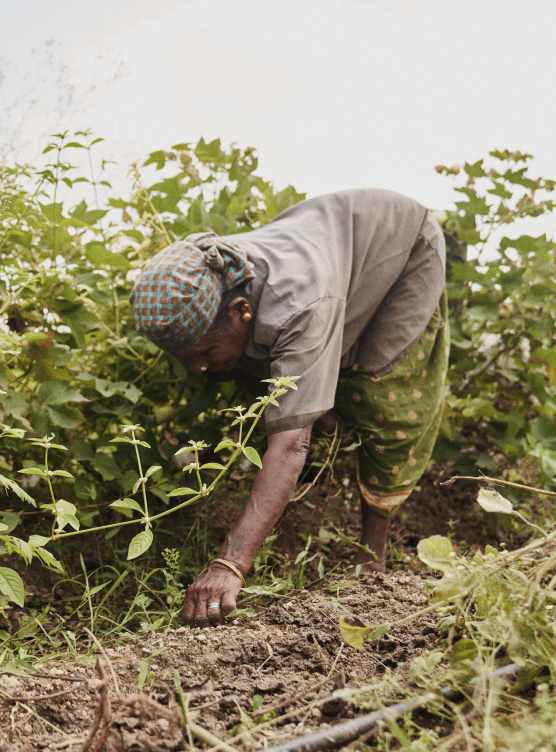
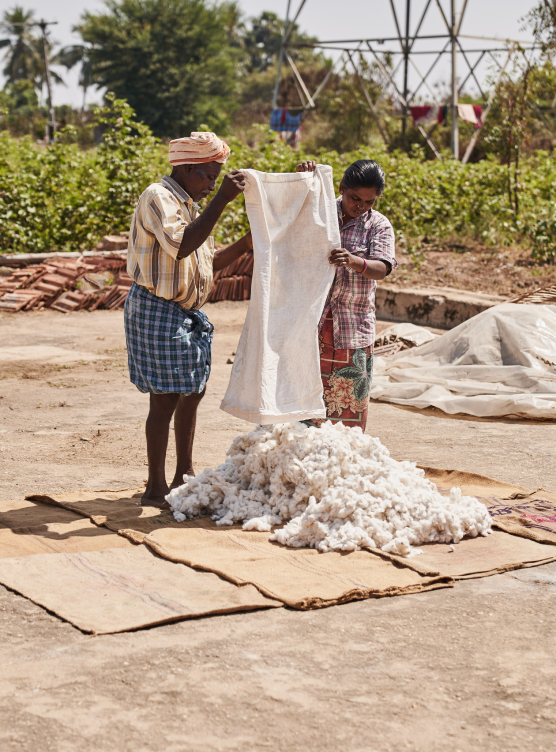
Regenerative wisdom
While the term ‘regenerative’ has become a buzz word in everything from agriculture to materials to design, the Oshadi Collective takes lessons from the experience and knowledge of our ancestors who worked in harmony with nature in ways that make so much sense and are so necessary to bring into our modern day practices.
Why would they work in ways that do not ensure that the next harvest will be as abundant as the last? Why would they not prioritise the health of the soil? Why bring chemicals and pesticides into the process which only result in harming their own health alongside that of the future of the soil? Why invest in seeds that require crippling investment into a big supplier, when the seed can be collected at the end of each harvest and form the basis of the next season’s crop? And why would they waste any scrap of the harvest or miss an opportunity to plough goodness back into the land? All of this for our thriving community of over 200 cotton farm partners is just common sense, the way things should be. It's wisdom as old as the soil itself.
“We take our lead from the farmers whose knowledge has been passed down from generation to generation, precious advice about everything from tried and tested recipes for manure to health-giving and medicinal uses of the herbs and plants we grow.”
We take our lead from the farmers whose knowledge has been passed down from generation to generation, precious advice about everything from tried and tested recipes for manure to health-giving and medicinal uses of the herbs and plants we grow. Much of this experience is passed on through actions and through family histories. It is not written down formally in manuals or taught by professors at universities. We at the Oshadi Collective understand and celebrate the importance of this precious cultural heritage. Just like the incredible craft skills of the master weavers we work with, who transform the cotton we grow into the finest of textiles, it is vital that we do not lose the innate know-how and ancient wisdom of the farmers we work with.
Stories of our community
Taking the seasons of the Tamil Calendar as our framework and timeline, we will be sharing our notes from the day to day life on the farm, the seasonal ups and downs, the challenges, and conversations with our collective - from the farmers to the weavers, the cotton pickers to the pattern cutters and seamstresses, the spinners, the dyers, and the block printers. Along the way, we will be pausing to have a closer look at some of the plants we grow, including cotton and its extraordinary life cycle; indigo, which we are growing to dye and print our own textiles; blackgram which is grown with cotton as an intercrop and ground cover and is such a nutritious and staple ingredient in cooking (we’ll be sharing a recipe or two). We will be documenting some of our collective knowledge, to show how things are done here, and how things can be done with enough care, respect, empathy and attention.
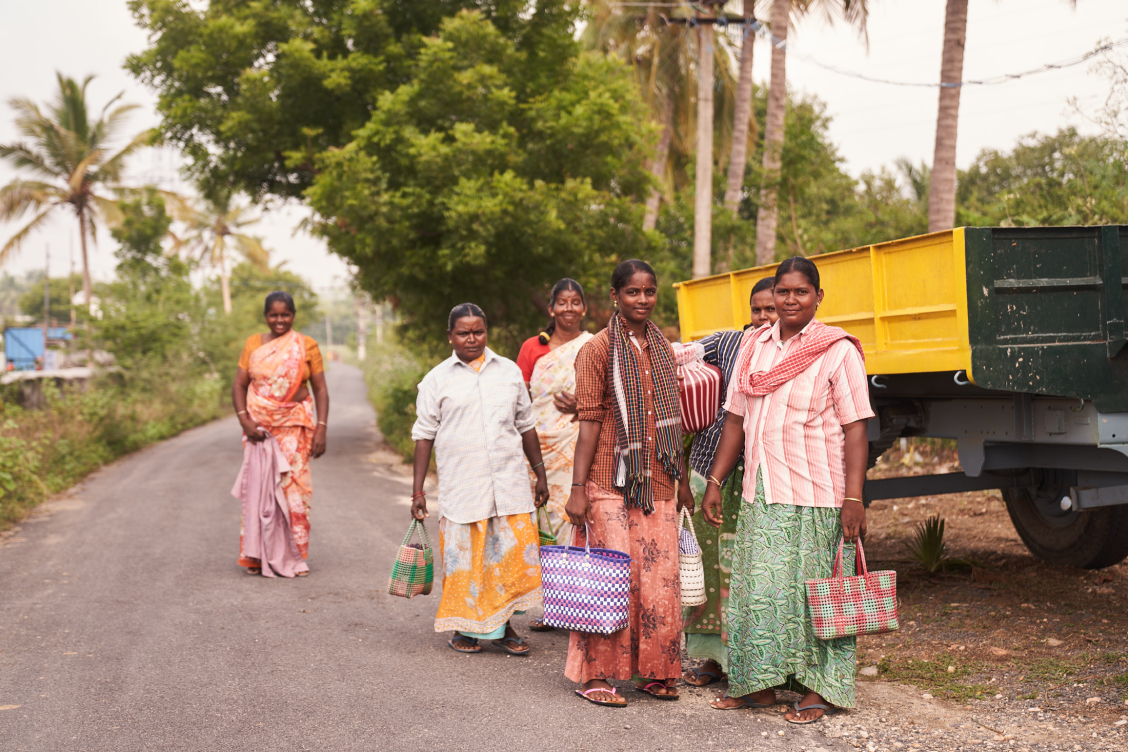
About the Tamil Calendar
We are building this journal around the Tamil Calendar so we will follow the local seasons according to the climate and the cycles of the moon and how they correspond to the activities on the farm. Just like summer, winter, autumn and spring, Tamil Nadu has six seasons based on the Tamil calendar. Each season has two months:

